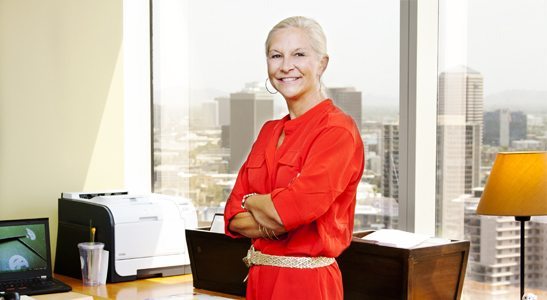Got milk? The swoosh stripe. The Aflac duck. Kleenex. Successful branding effectively uses a name, term, design, symbol, or even a musical jingle to distinguish a product or service from those of other sellers.
“Brands are sincere, distinct and consistent,” says David Eichler, creative director and founder of David and Sam PR. “Brands are by definition, built over time. A brand is a promise kept to its consumer, over and over.”
Kristin Bloomquist, executive vice president and general manager of Cramer-Krasselt Phoenix, has a simple way to define good branding: “Branding is a popularity contest and the brand with the most friends wins.”
While it’s common sense to think that effective branding will lead to an increase in business, experts point to several critical things to remember when a company tries to build an effective branding campaign.
“First, it’s important to understand that while there’s a time and place for a specific branding campaign, effective branding should be an ongoing effort for every organization,” says Christine Olivas, director of client services for Off Madison Ave + SpinSix.
“How and when to communicate the company’s values shouldn’t be a one-time outreach.”
However, Olivas says there are times when a branding campaign makes sense:
• When you are looking to change perceptions in the marketplace.
• When a new product or service is launching.
• Or, when you are introducing yourself to a particular market or segment.
“In these instances, it is important to consider how to make an impact while ensuring that the subsequent marketing and operational efforts can continue to support and sustain the awareness you’re creating,” she stresses. “The last thing you want is to have a campaign that drives, say, tons of buzz in the social space but to not have an ongoing social media strategy that will continue the conversation when the blitz is over. You should also have an obsessive eye on visual consistency. If you are launching a brand campaign, make sure the look and feel aligns with your core identity so as not to create confusion in the marketplace.”
While Olivas touched on the impact of social media on 21st-century branding, there is no denying that it’s changed the way companies market themselves.
“Social media is like a two-way megaphone for brands,” Eichler says. “Consumers are now empowered to share their experiences — positive and negative — and brands have the ability not only to convey their brand’s attributes, but reinforce them by how they interact with their customers. Especially when someone is disappointed with their experience with the brand.”
That ability for consumers to immediately engage is why successful brands need to have depth to their brand story and relevant reasons for people to want to engage, according to Bob Case, The Lavidge Company’s chief creative officer and creative director.
“Setting up a Pinterest account and a Facebook page aren’t effective unless you have a reason for having them,” Case says, “a strategy for how you want to shape the message and a plan for the unplanned — negative responses, etc.).”
Case says his best advice when creating a brand is to keep the message simple.
“Advertising is expensive, which can lead to companies trying to sell everything about their products and services in every message,” he says. “What’s the ONE thing you want people to know? It should be devastatingly difficult to build your campaigns because of what you leave out.”
EXPERTS’ BEST BRANDING
Here are some of the Valley’s best marketing experts’ picks for the best branding efforts:
Kristin Bloomquist, executive vice president and general manager of Cramer-Krasselt Phoenix: Corona does a terrific job of reaching into its authentic heritage and creating a world that represents the feeling of a tropical vacation, an escape to the beach, to a place of a warm sun, gentle breezes and sand between your toes. Corona’s consistent brand imagery has become an iconic symbol of the Corona brand, driving case sales in excess of $120 million to become the No. 1 imported beer in the nation.
David Eichler, creative director and founder of David and Sam PR: “The one that comes to mind, given the time of year is the NFL. In the 45 years of Super Bowls, the league has masterfully overtaken all other American sports in sales, merchandising, ad revenue and fan loyalty. They are savvy in how they have positioned themselves as vested in communities and causes.”
Isabelle Jazo, vice president of brand strategy at E.B. Lane: “Apple’s brand archetype is “Revolutionary.” The brand associates itself with thought leaders, artists and people in history that changed the rules of the game … Apple’s marketing certainly gets people’s attention, but the customer experience is what makes the branding phenomenal.”
Bob Case, The Lavidge Company’s chief creative officer and creative director: “I’d go with Nike. Not for any single campaign, but for their overall brand. They are a vibrant, living brand that re-invents itself without losing its core truth. It’s relevant, serious, fun, humorous, inspirational — in truth, a well-rounded robust story.”
Christine Olivas, director of client services for Off Madison Ave + SpinSix: “The best example of a brand that has become an experience is Zappos, an online retailer. From day one, the company has embraced service as a differentiator, but service isn’t just defined as a helpful customer service representative. Instead, the company has extended its friendly and fun approach to doing business across all internal and external communications.”




